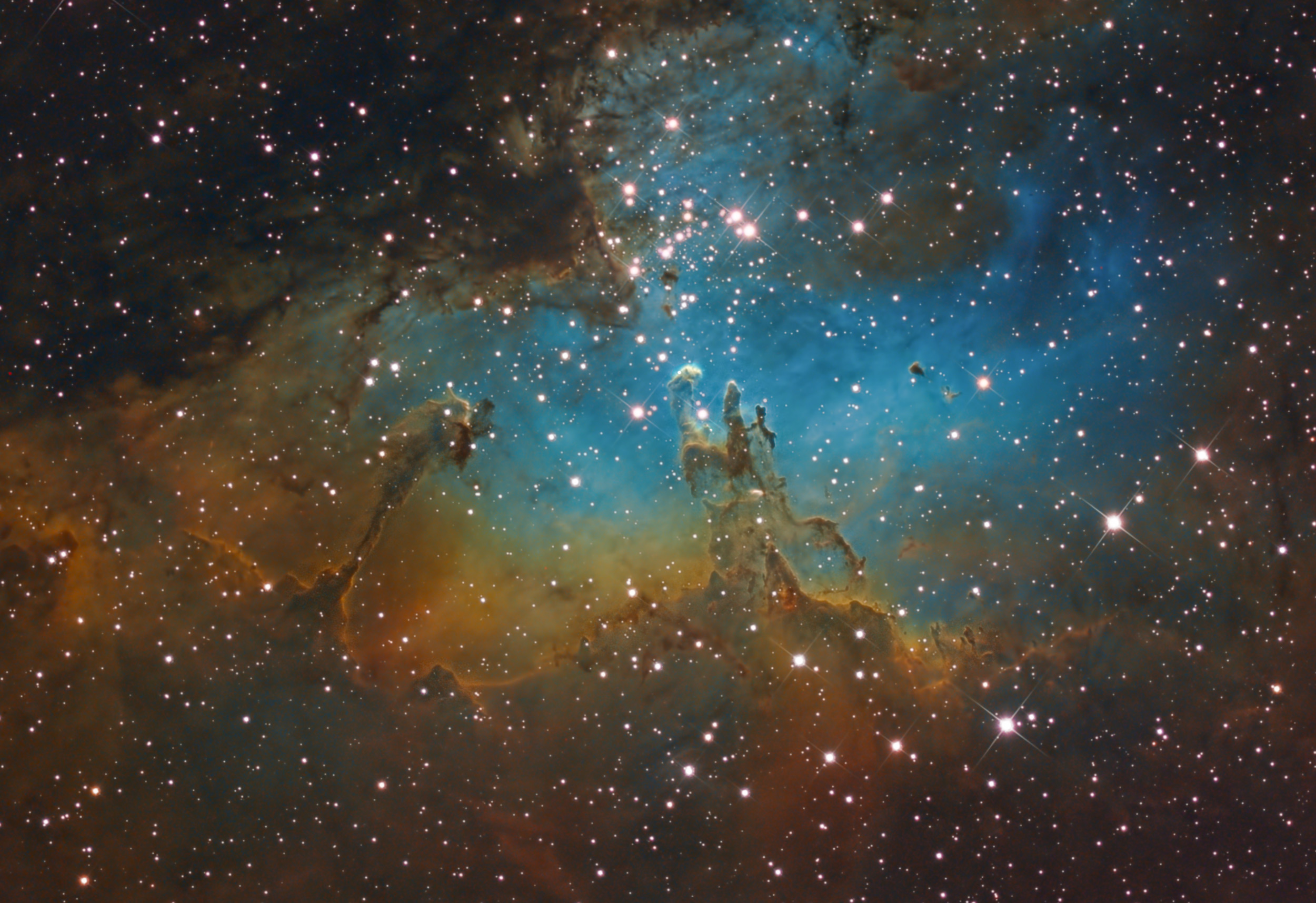Amazing Eagle Nebula Swoops into Stargazer's Night Sky Photo

Soaring thousands of light years from Earth, the Eagle nebula appears in beautiful display in this night sky photo.
Photographer Bill Snyder took this photo at Heavens Mirror Observatory, Sierra Nevada Mountains, Calif., in June 2012.
The stunning Eagle nebula, also called M16, lies in the constellation of Serpens about 6,500 light-years away from Earth. A light-year is the distance light travels in one year, or about 6 trillion miles (10 trillion kilometers).
Among the gas and dust, the nebula is a very active star-forming region. These massive stars expel hot gas and fade quite quickly creating the vivid shapes and colors of the nebula. It’s also noted for a 1995 iconic image of what is called the Pillars of Creation, tall star-forming columns inside M16. Because the images we receive on Earth are 6,500 years behind, astronomers have yet to determine whether the Pillars of Creation columns were destroyed in another astronomical event. [Hubble Telescope's Amazing Photos]
To make this image, Snyder used an TMB 130mm scope, with Apogee U8300 camera for color and a Planewave 17 inch with Apogee U16 for luminance, Ha 7 hours, OIII 4.3 hours, SII 6.3 hours, Lum 2 hours, color data upscaled to luminance.
Editor's note: If you have an amazing skywatching photo you'd like to share for a possible story or image gallery, please contact managing editor Tariq Malik at tmalik@space.com.
Follow SPACE.com for the latest in space science and exploration news on Twitter @Spacedotcom and on Facebook.
Breaking space news, the latest updates on rocket launches, skywatching events and more!
Nina Sen is a freelance writer and producer who covered night sky photography and astronomy for Space.com. She began writing and producing content for Space.com in 2011 with a focus on story and image production, as well as amazing space photos captured by NASA telescopes and other missions. Her work also includes coverage of amazing images by astrophotographers that showcase the night sky's beauty.
